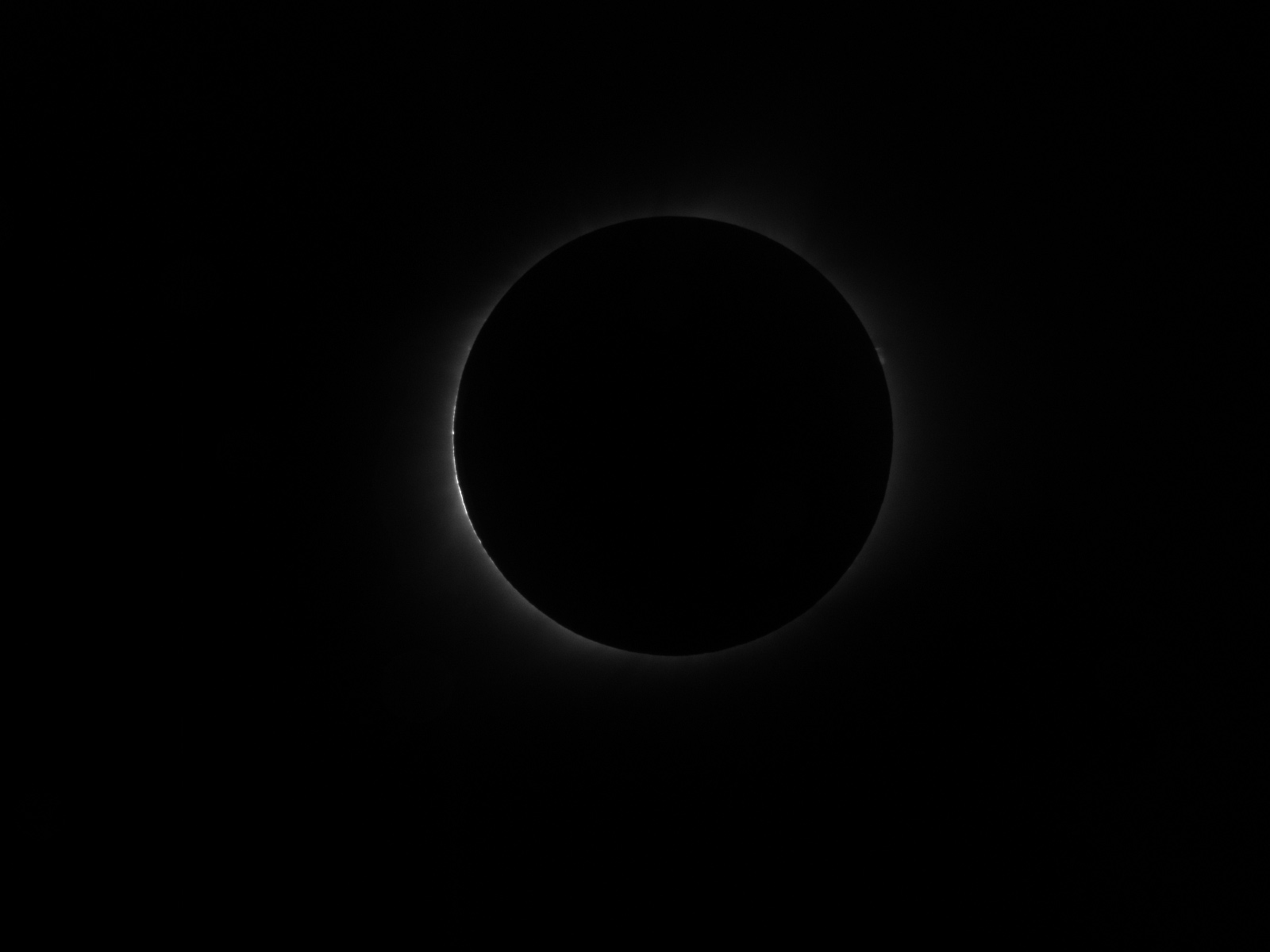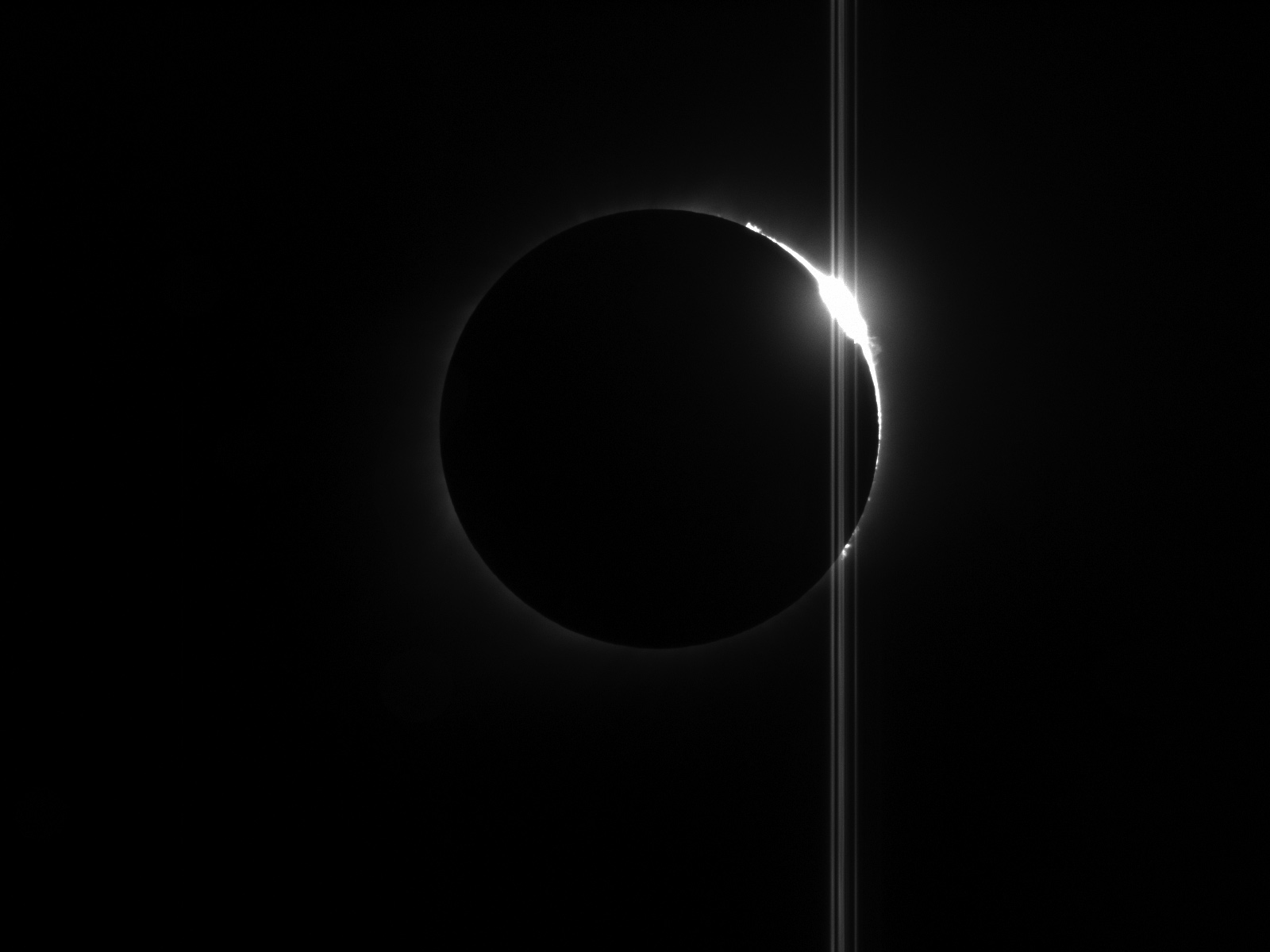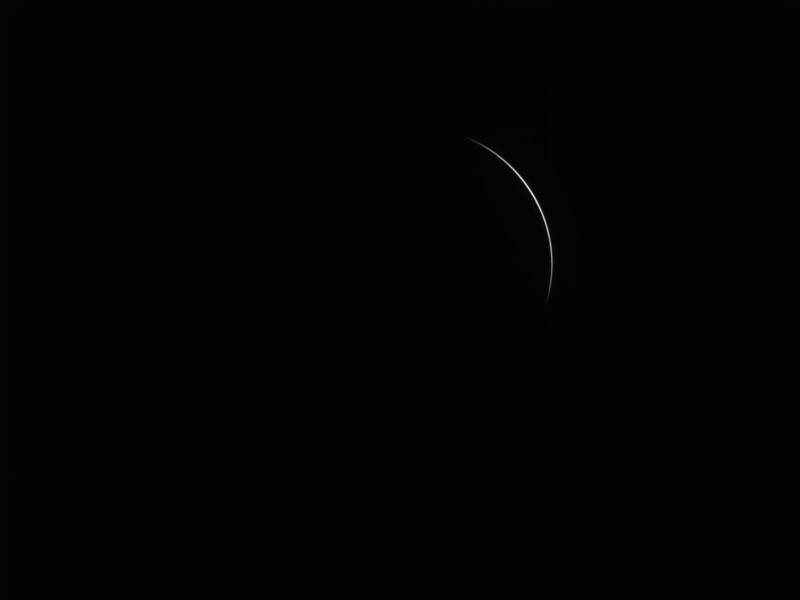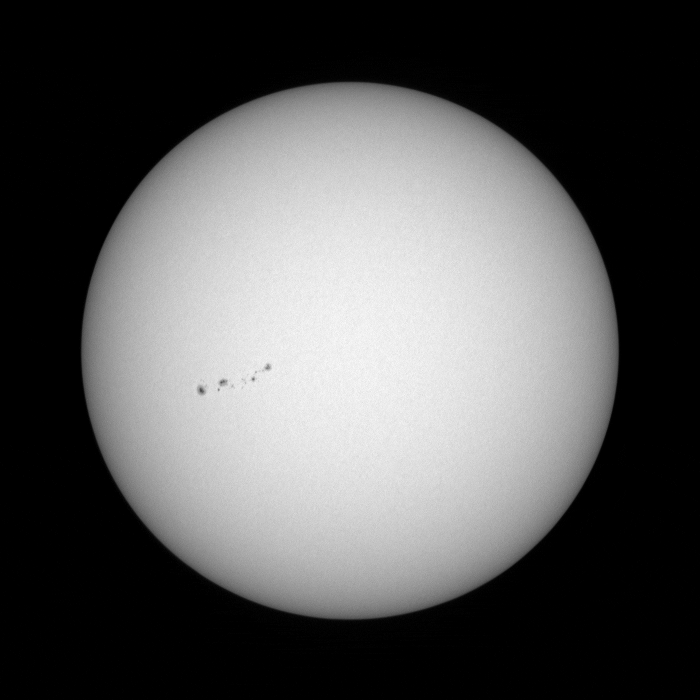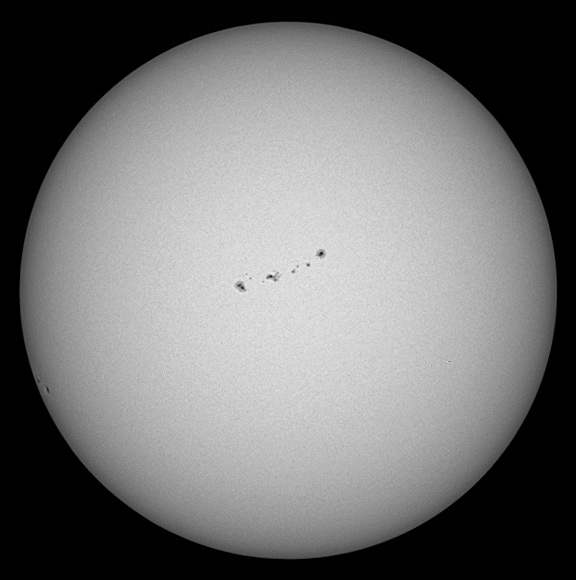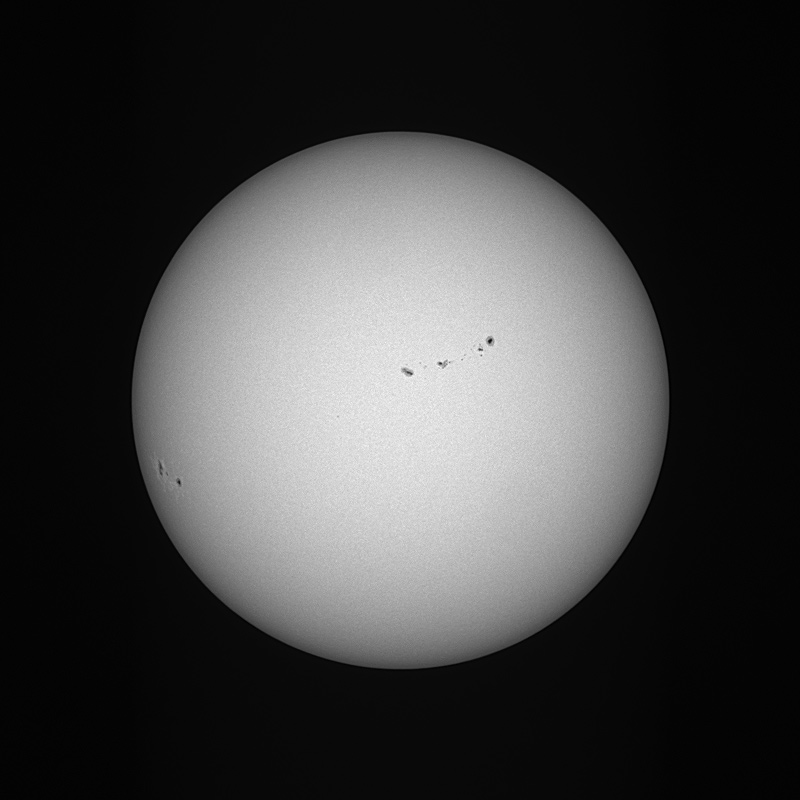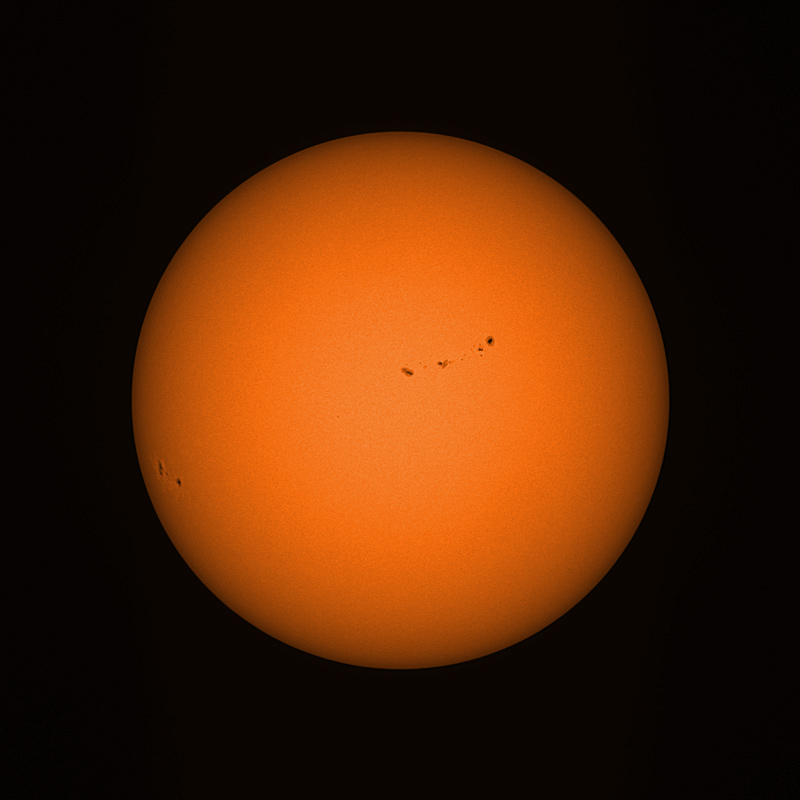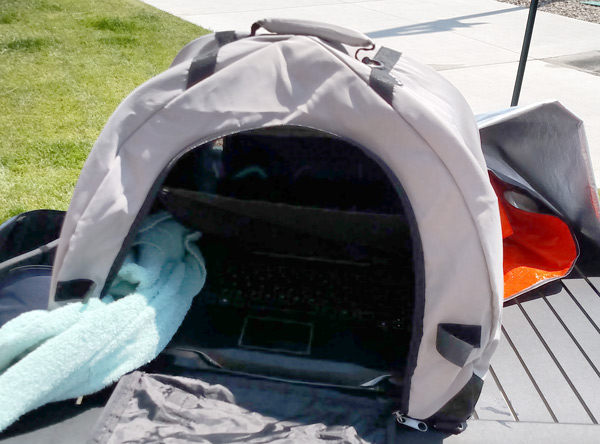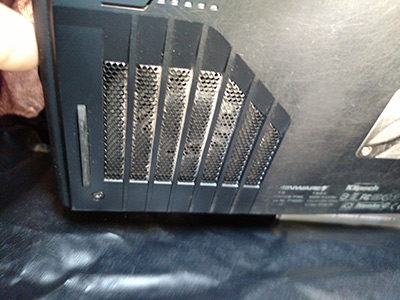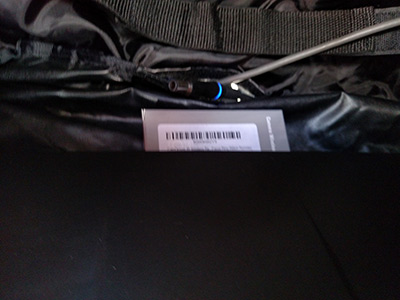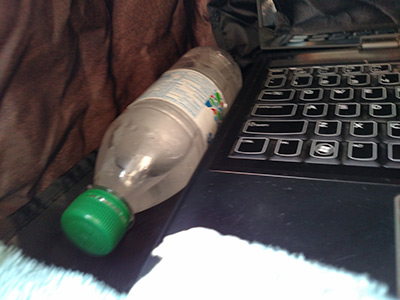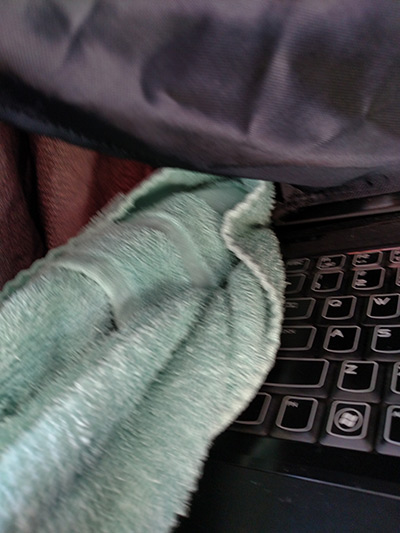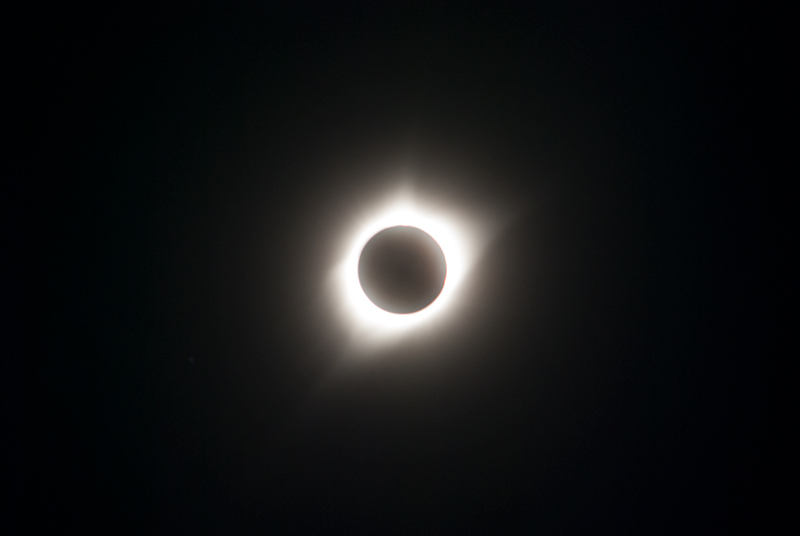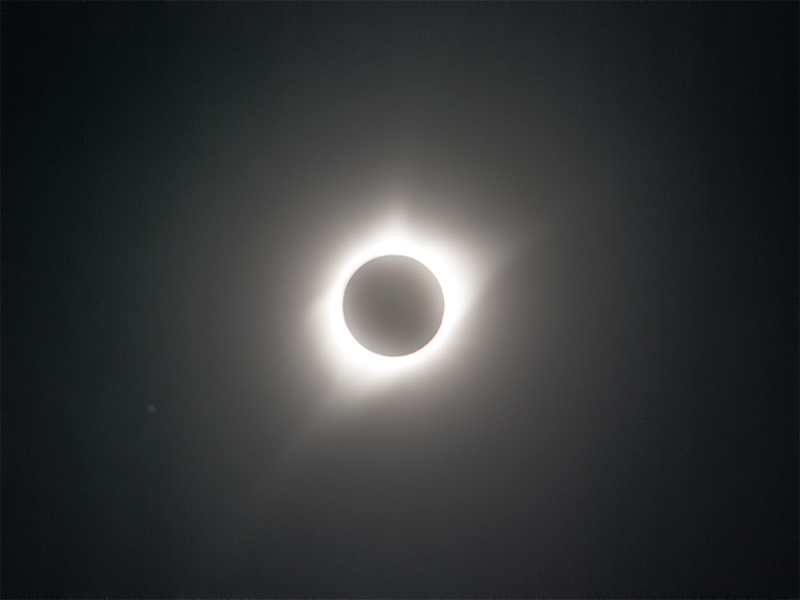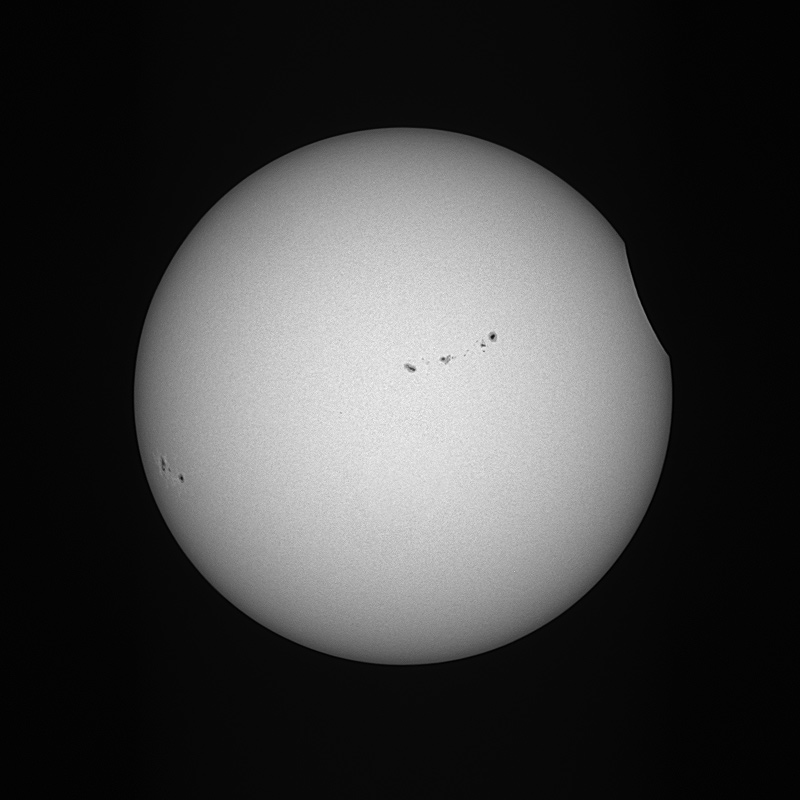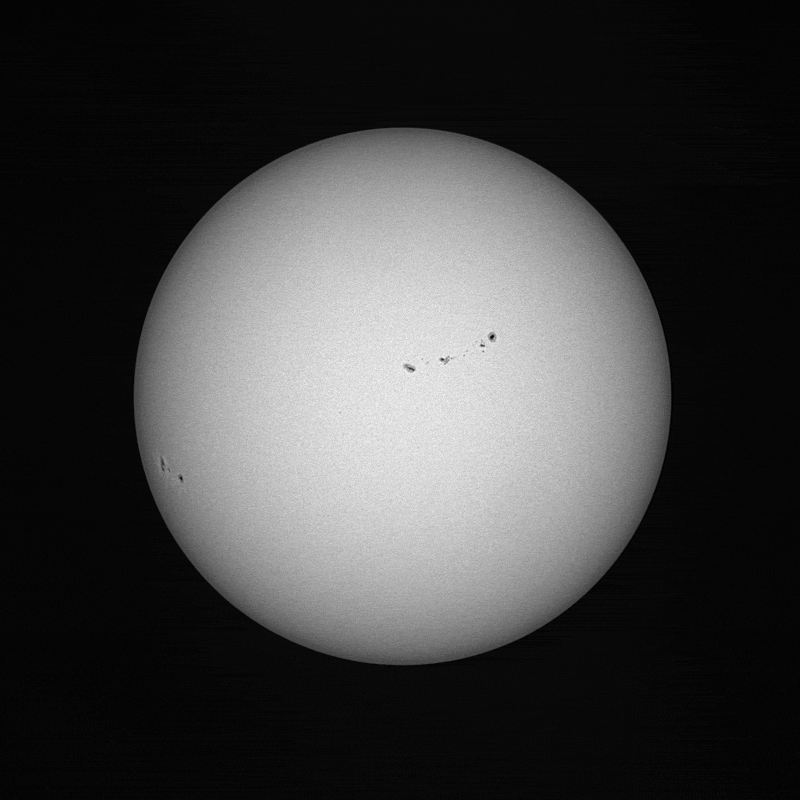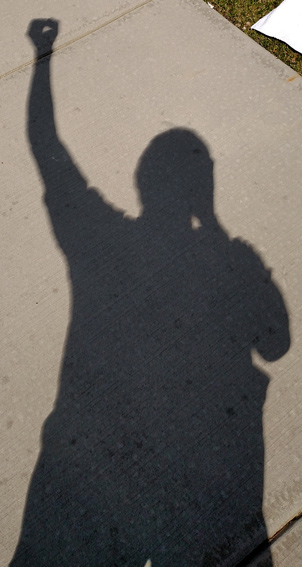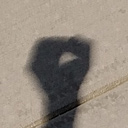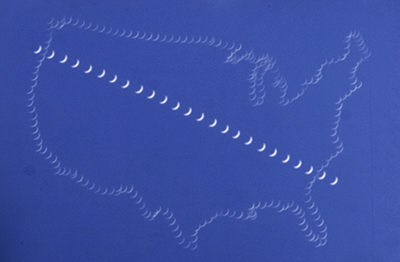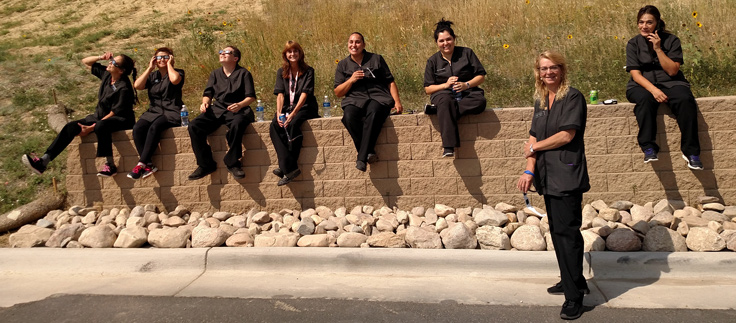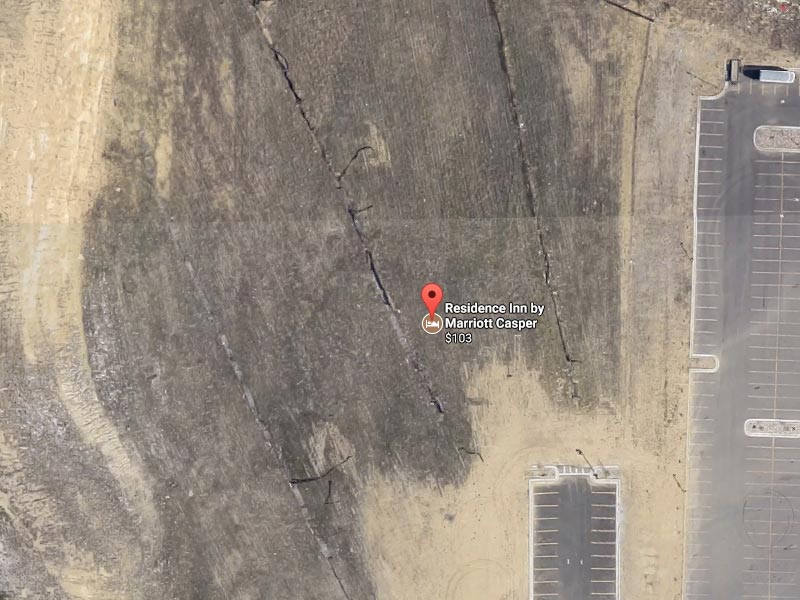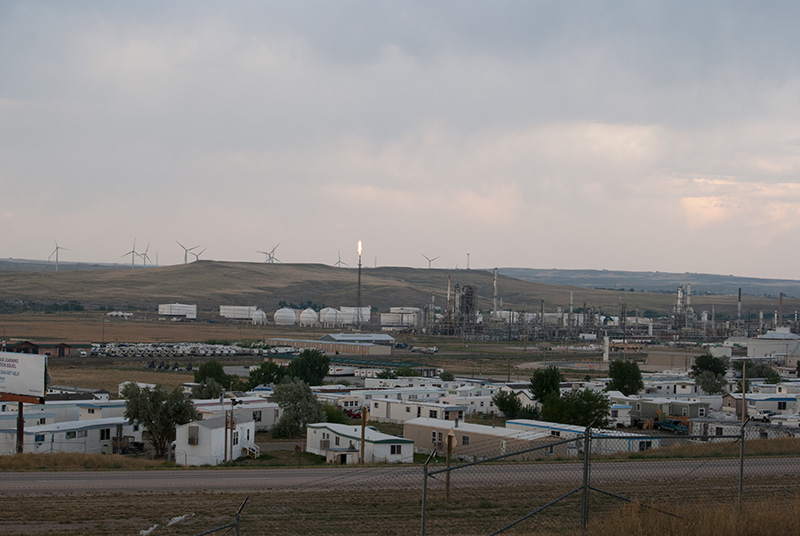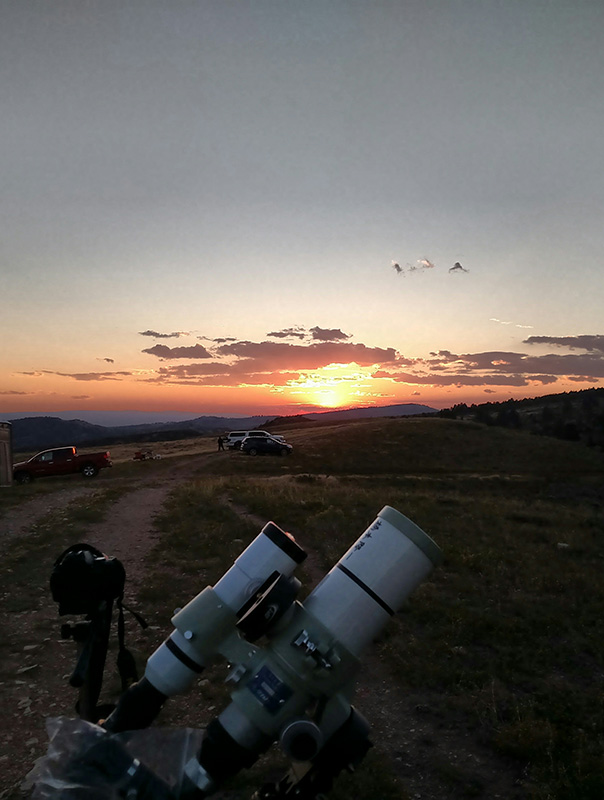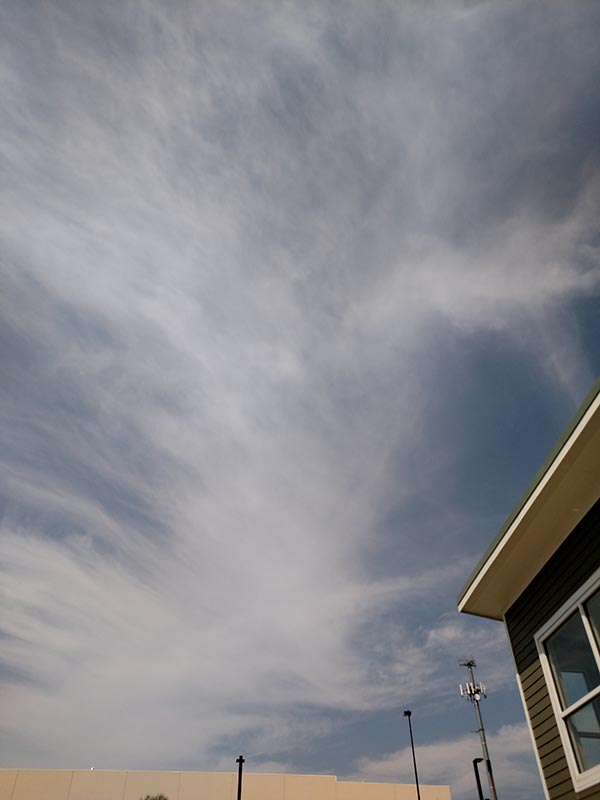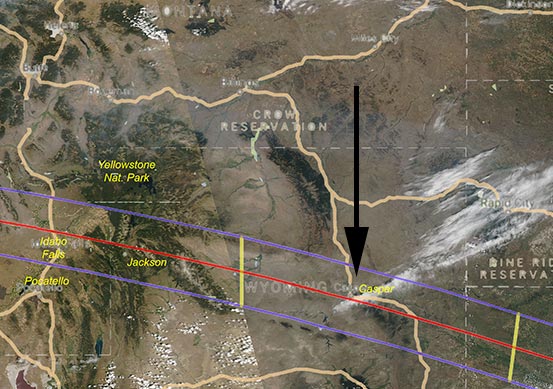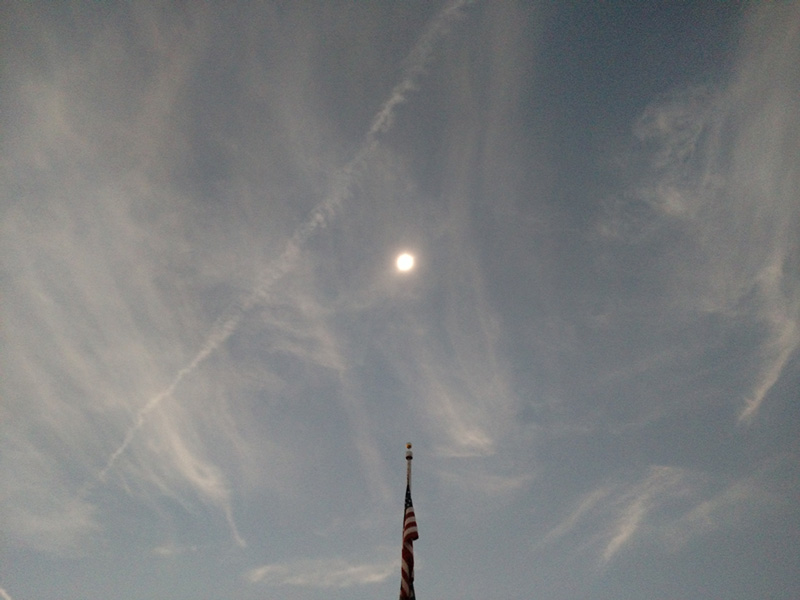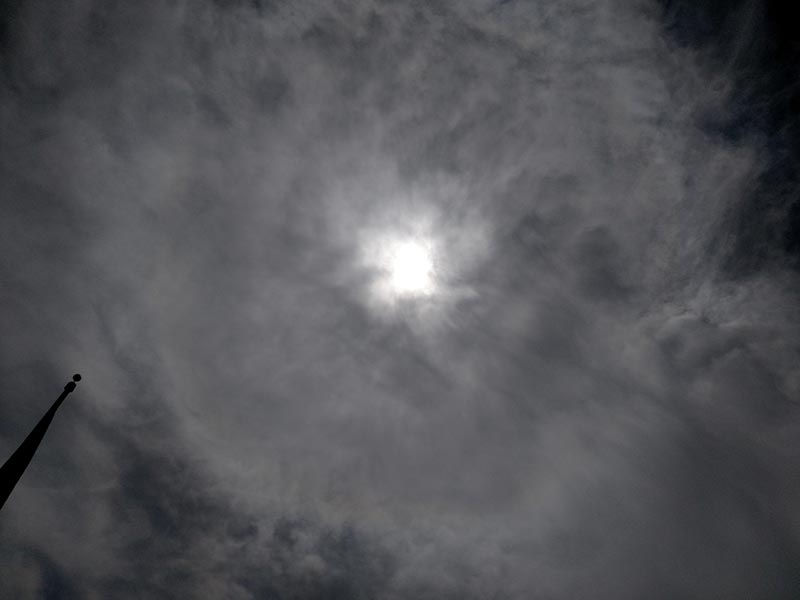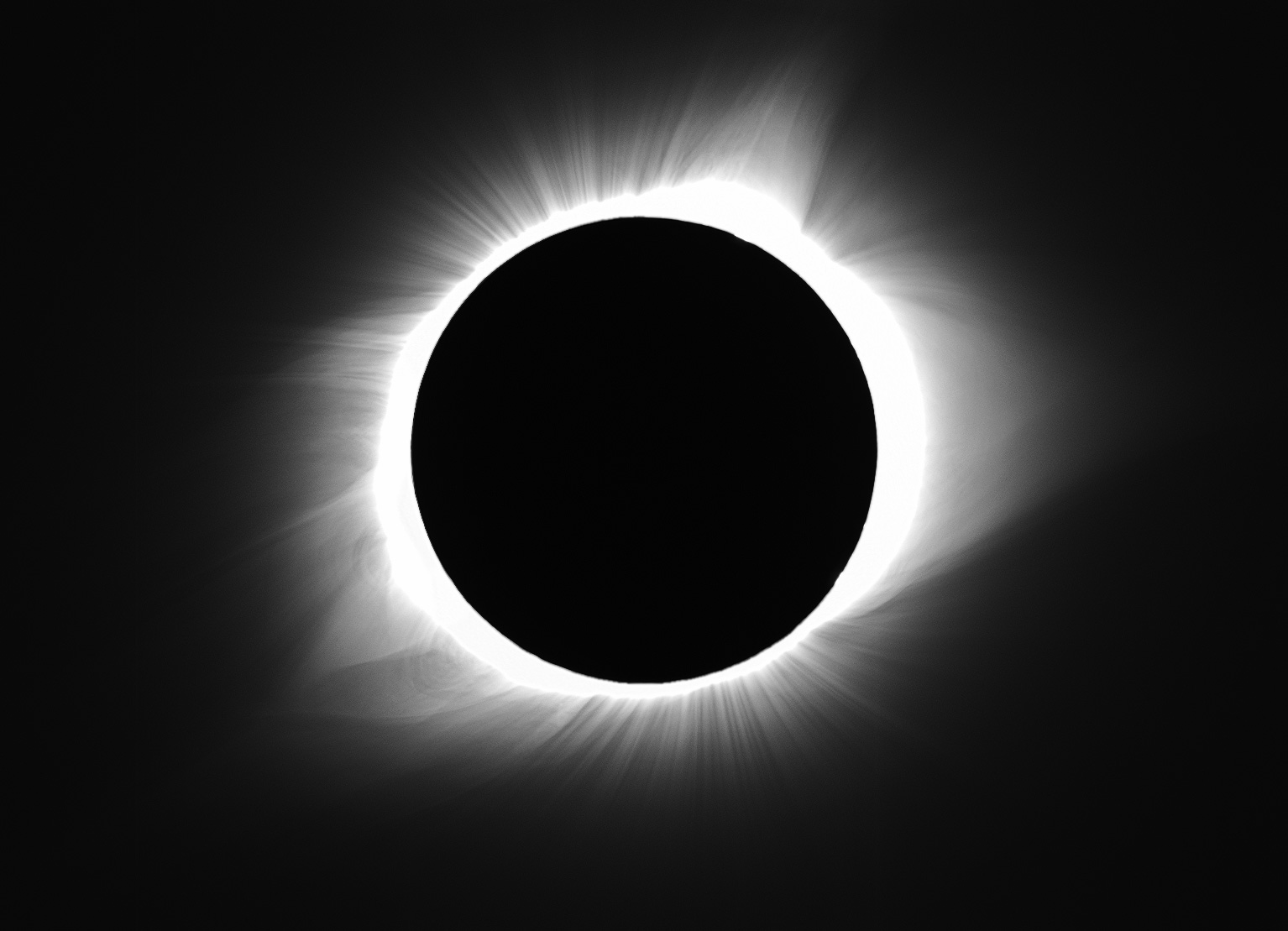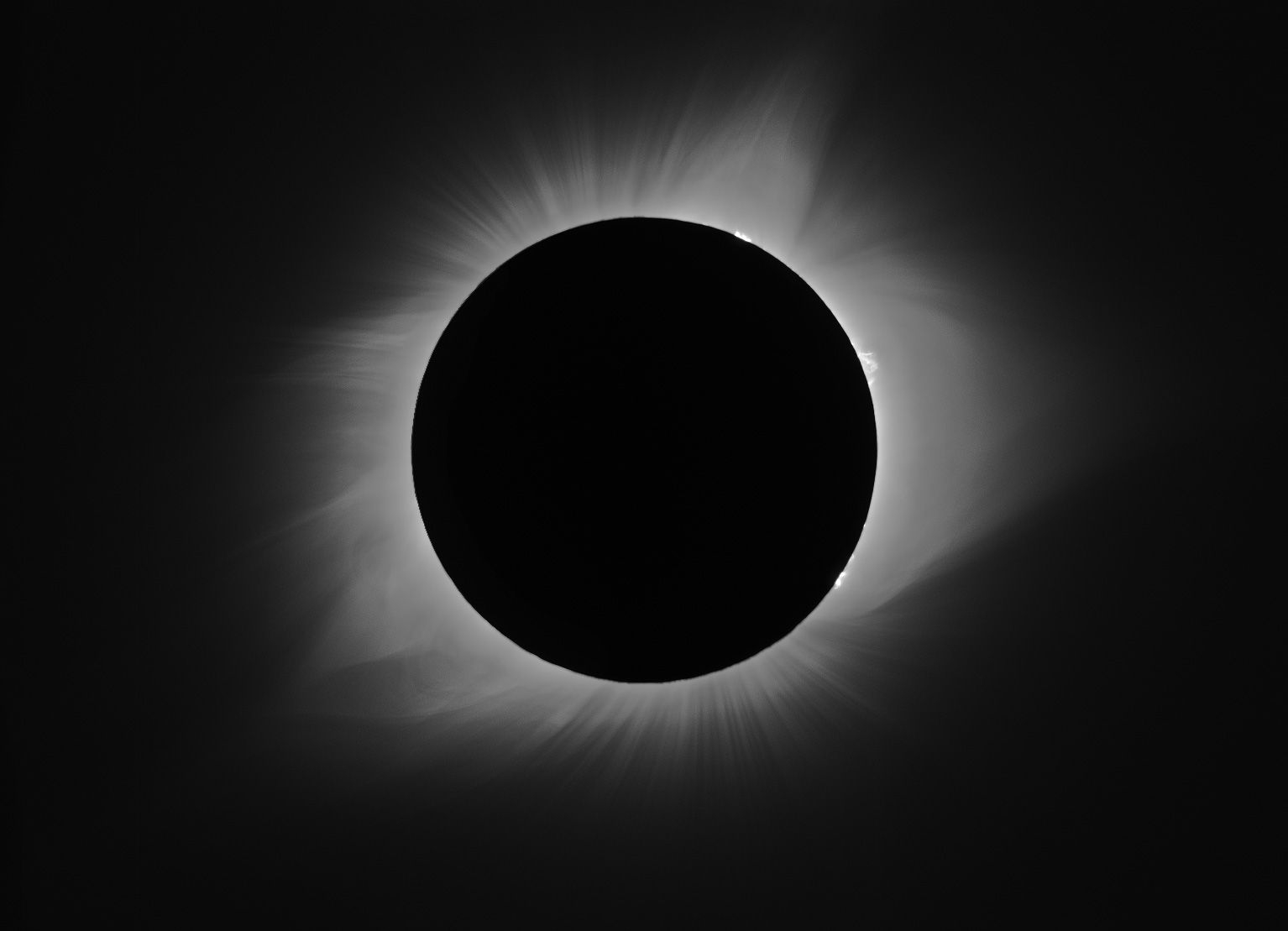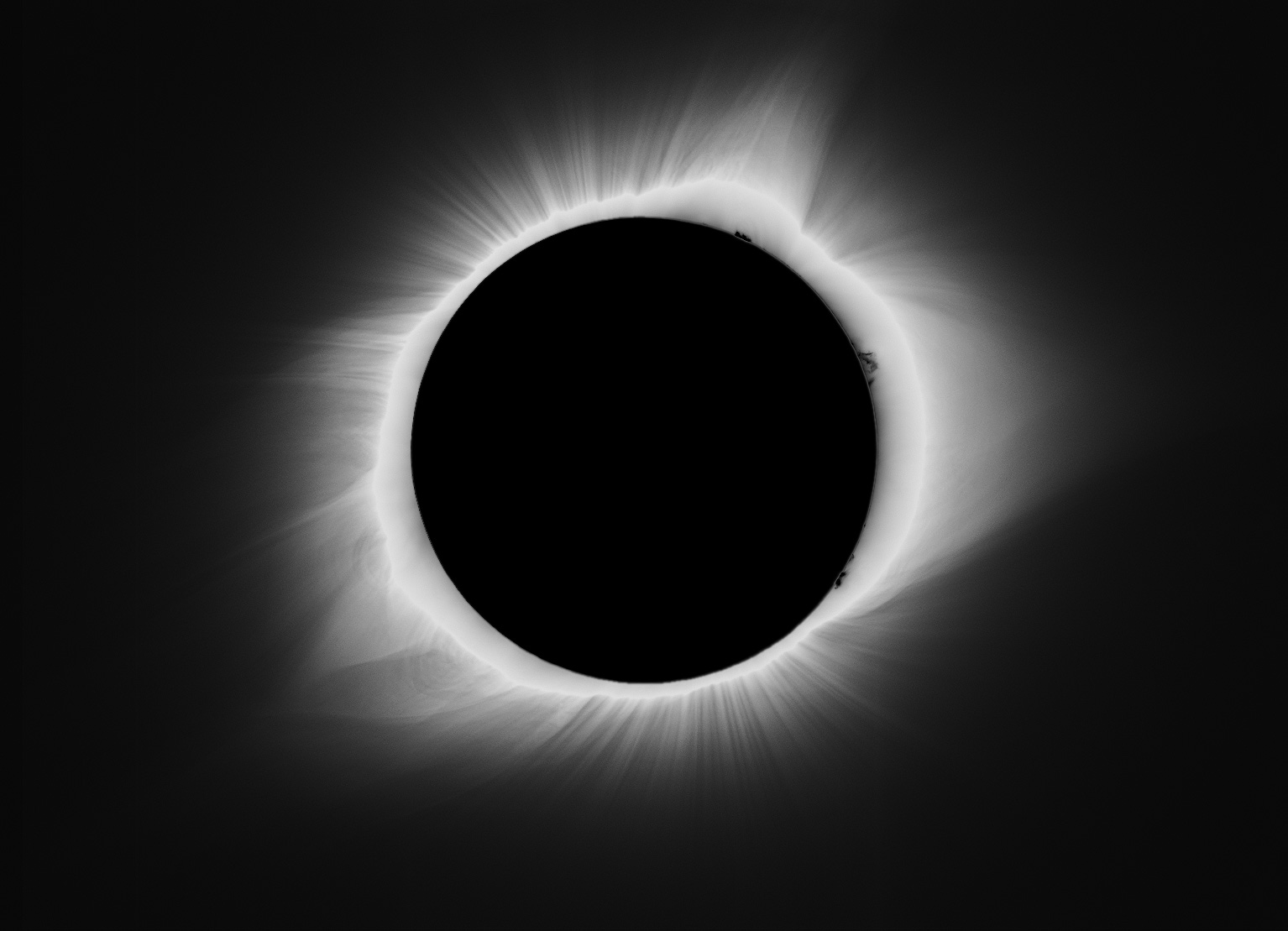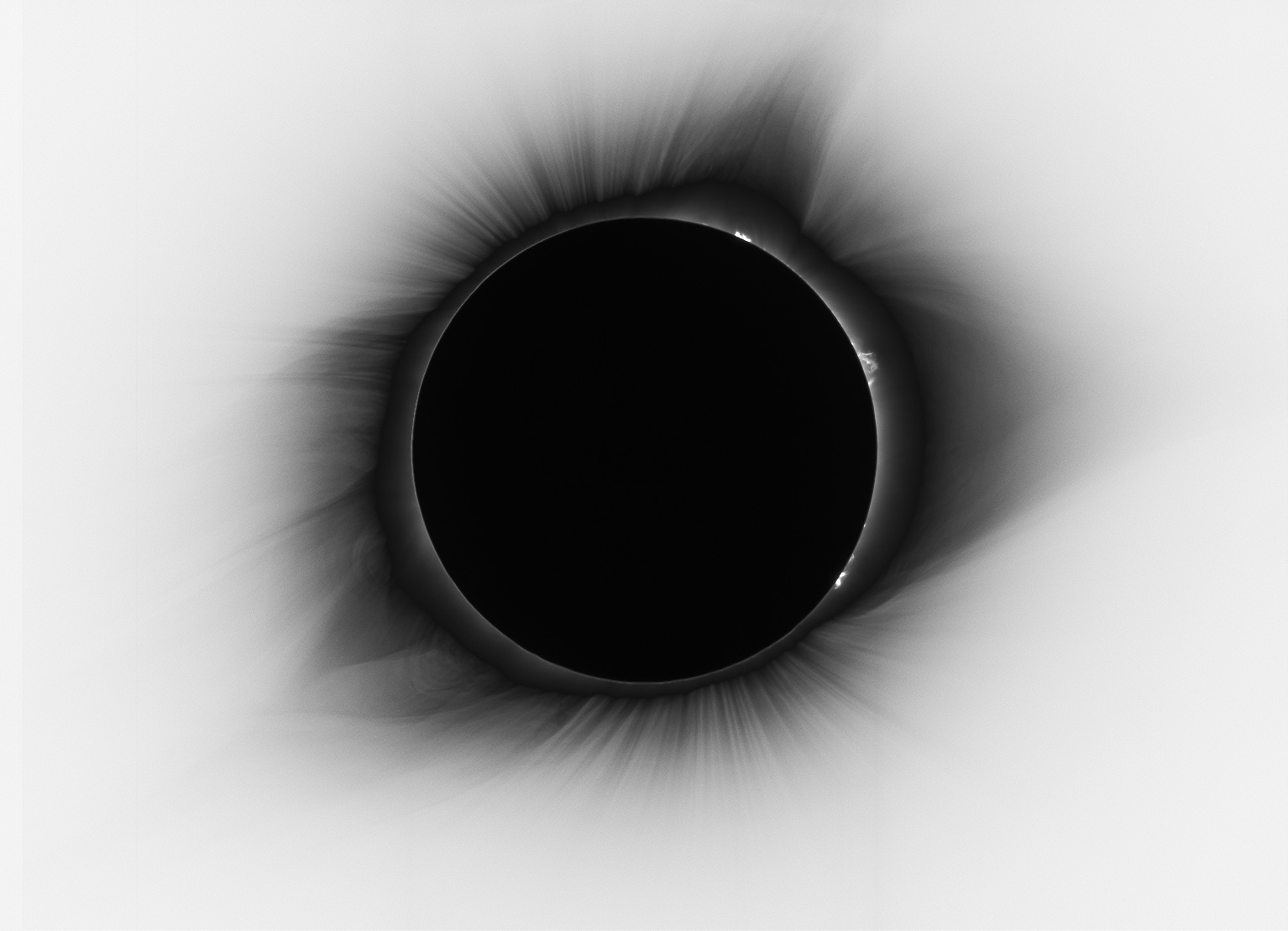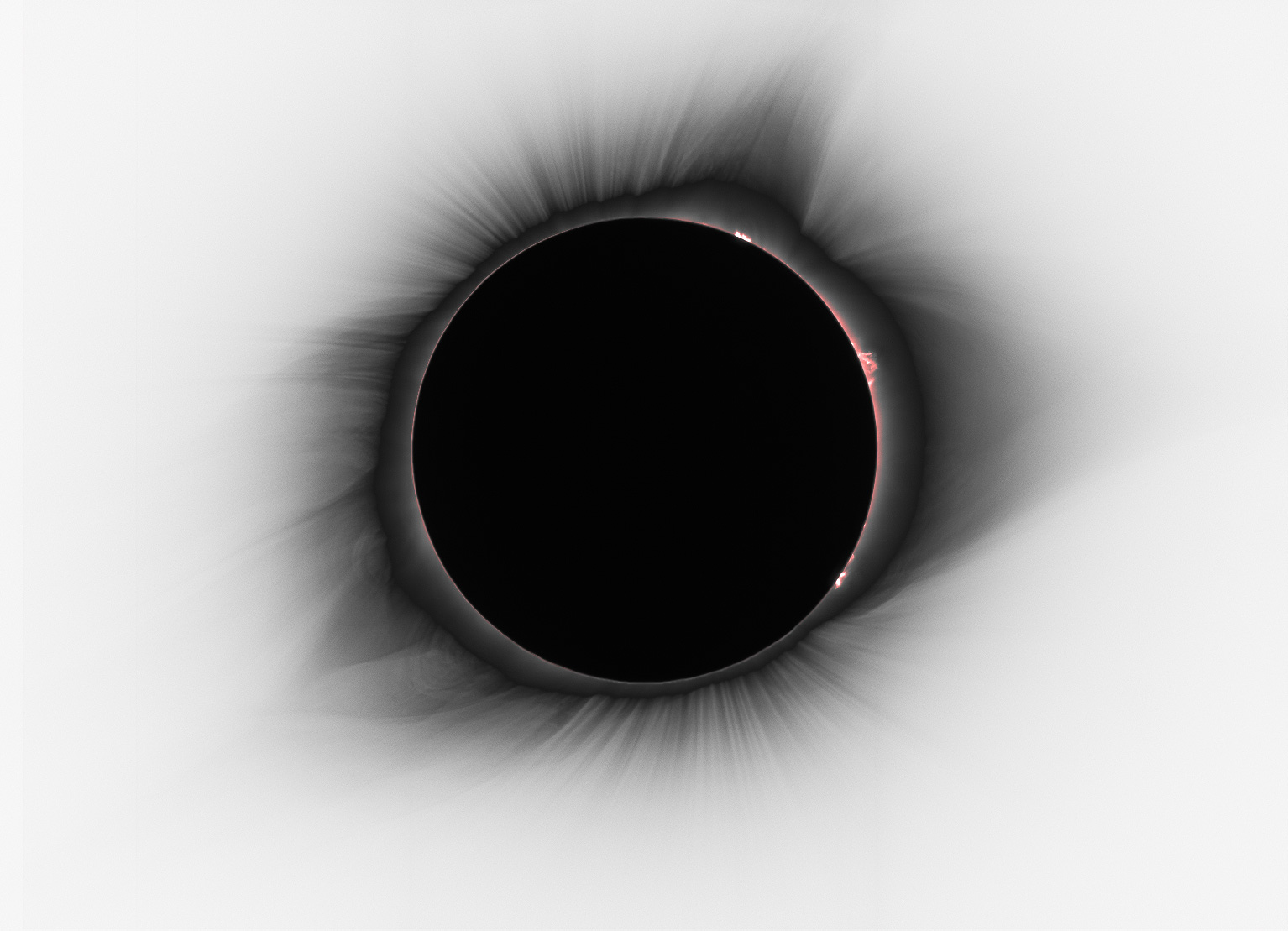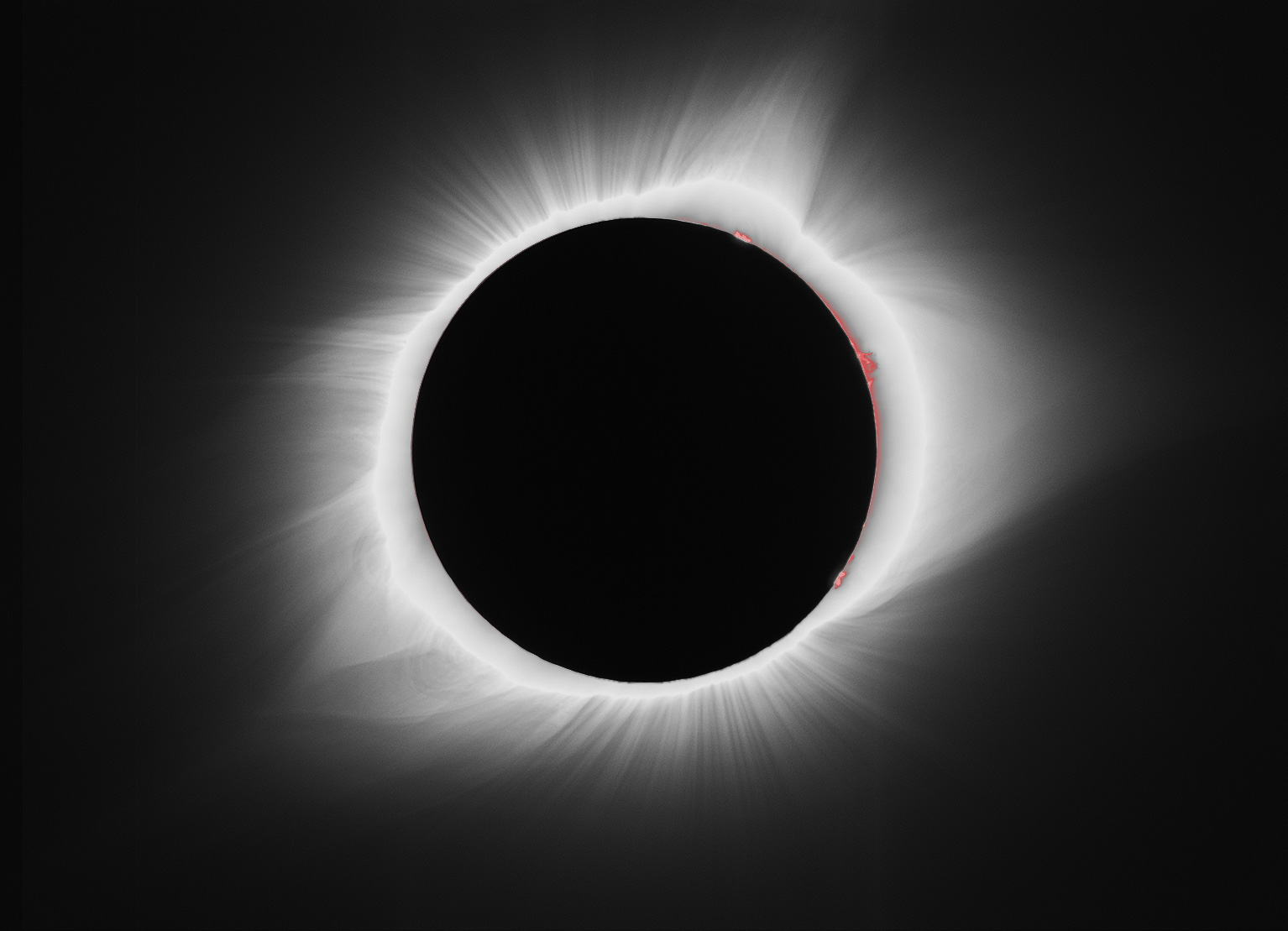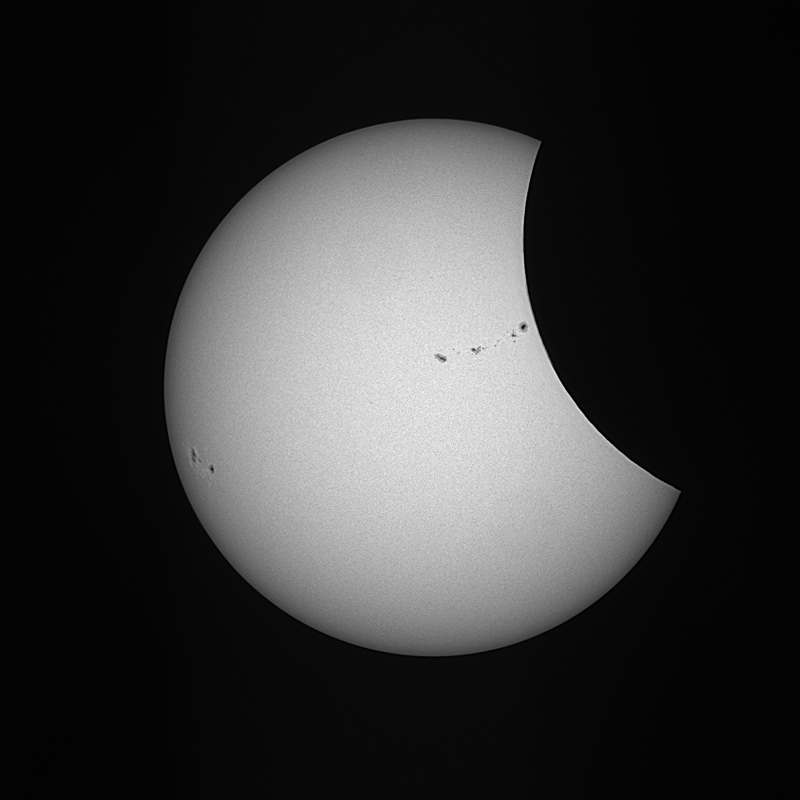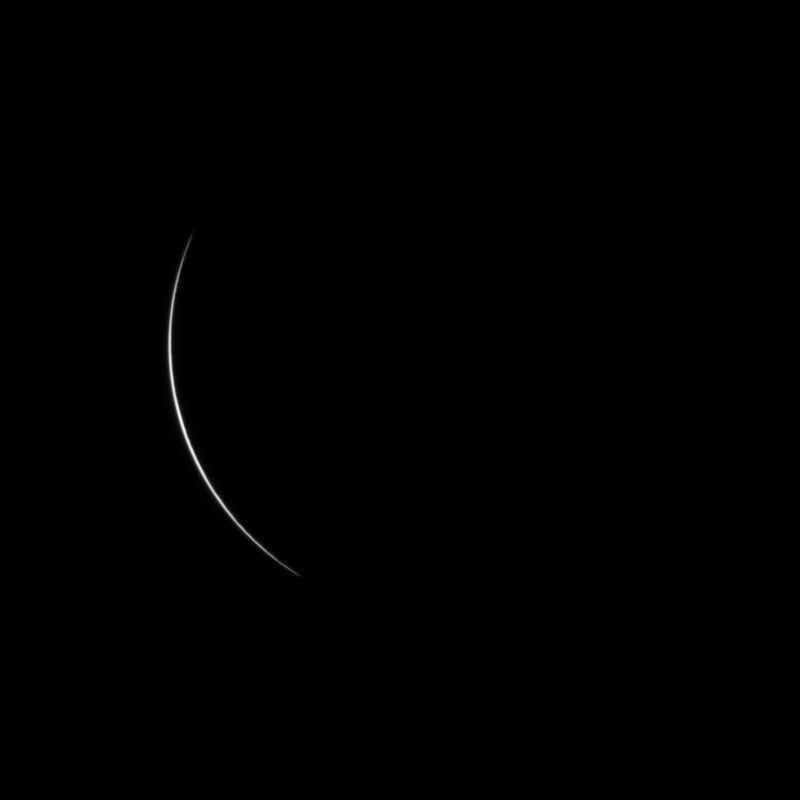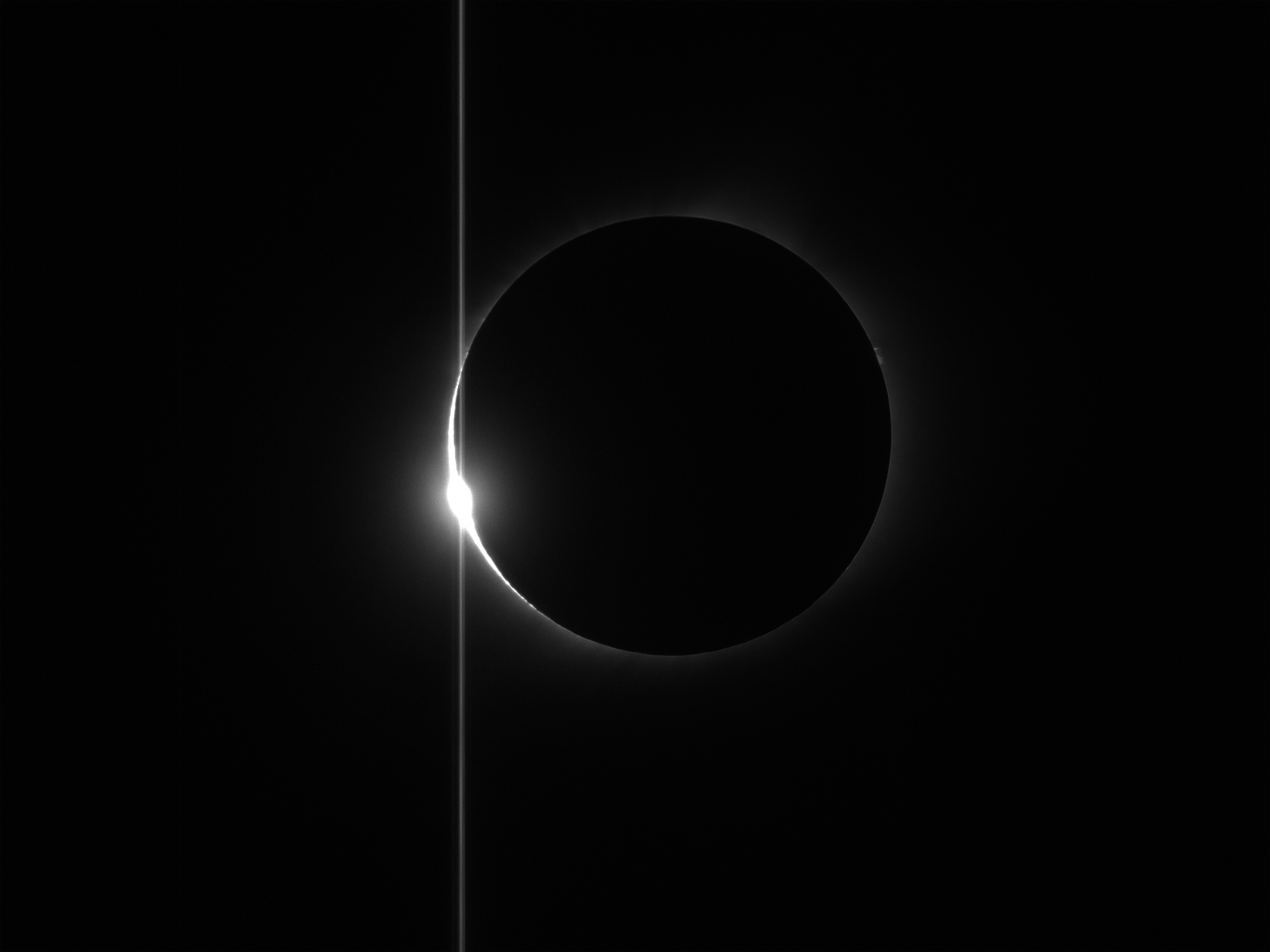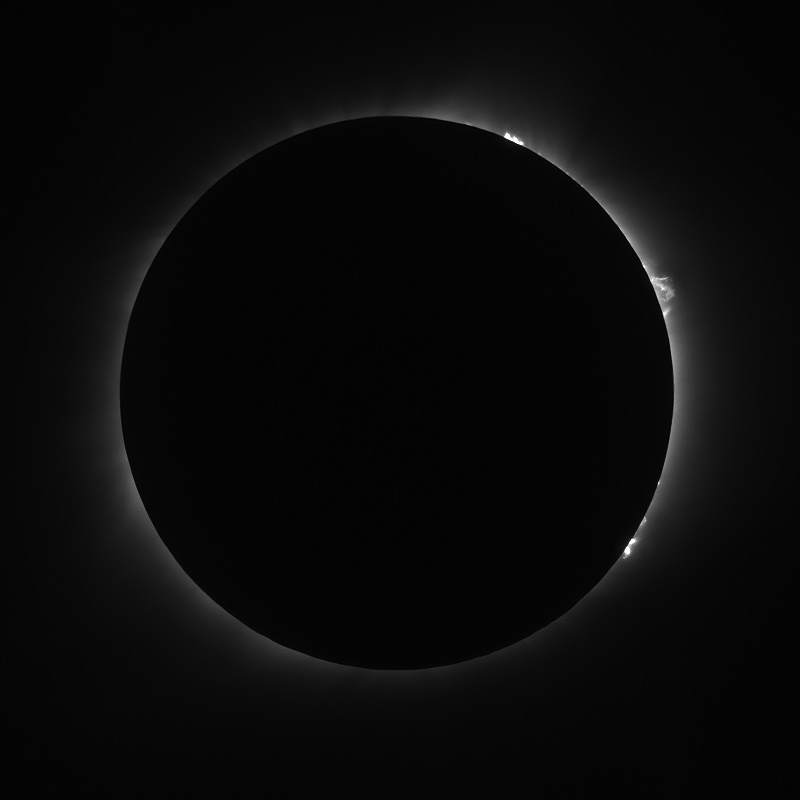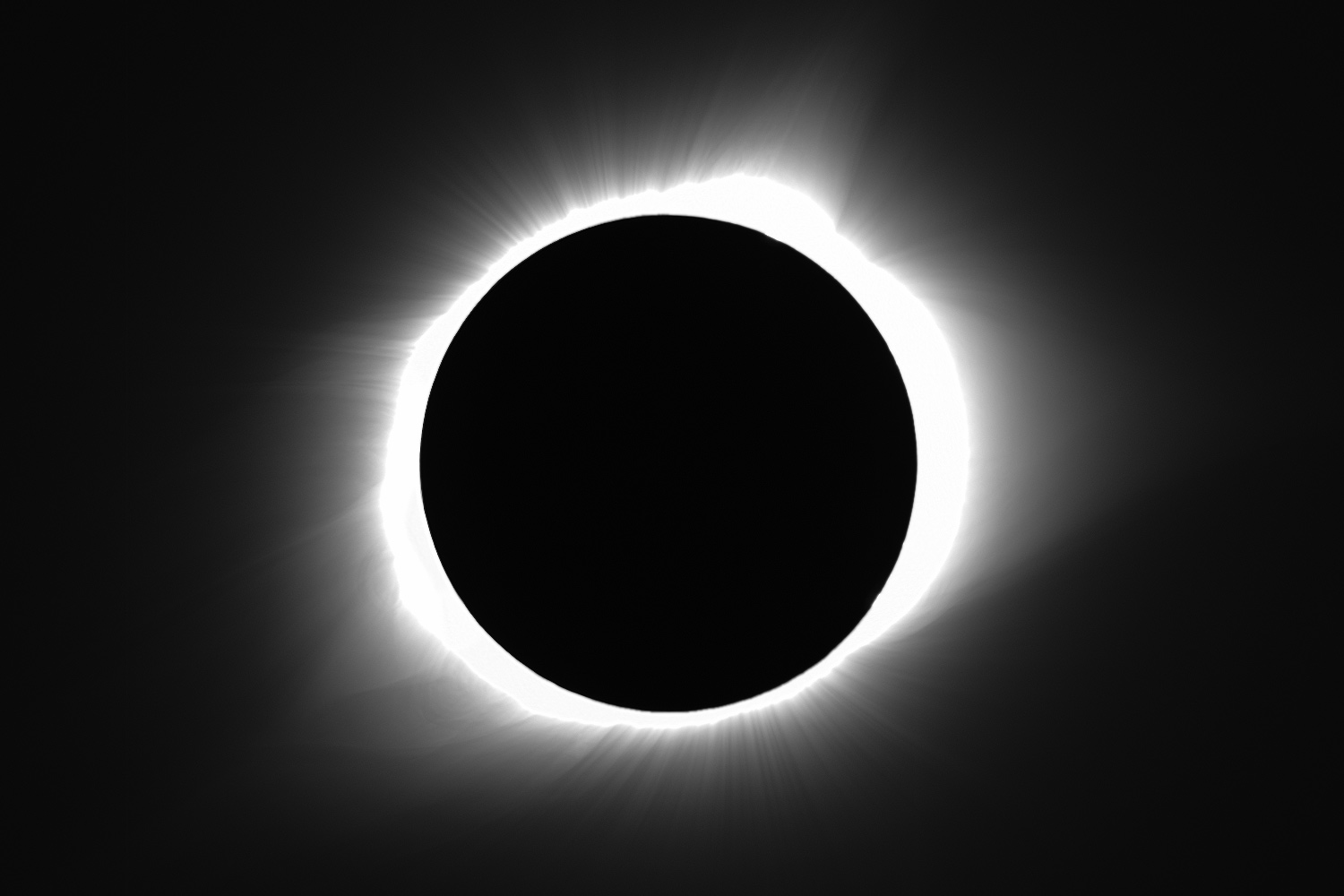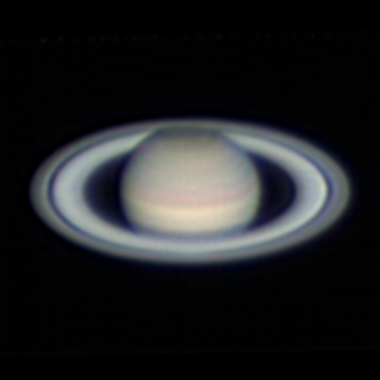while there were some flubs (like blowing focus for the color DSLR images), it was generally a successful outing.
before the video, here are a few more of the interesting still frames
dark ring, with some lunar surface detail visible on the left edge (click on image for full size):
ending diamond ring with multiple blooms, prominences still visible (click on image for full size):
filter back on for crescent shot as the brilliant sunlight returns:
Here's the video of totality with time variably compressed from 3x for starting and ending diamond rings to 12x for longer images of the dark ring, and outer corona. what you'll see:
1. filtered left crescent of the sun
2. filter off 20 seconds before totality, brilliant light overwhelms the image and illuminates passing clouds :(
3. the light fades to the diamond ring, the vertical lines are due to the bright light overwhelming the digital camera, spilling signal into adjacent pixels
4. totality, the dark ring with the moon moving slowly from right to left, progressively covering the chromosphere on the left side while exposing more dramatic prominences on the right, arcing off the solar edge.
5. change in exposure to get the outer corona, then back and forth to the dark ring
6. final shot of chromosphere on right side with prominences
7. right sided diamond ring with more blooms
8. filter back on for right side crescent 30 seconds after totality ends
be sure to adjust the quality to high (gear lower right) and increase the image size (lower right)
IMAGING TECHNIQUES 2:
in addition to 2 full dry runs, i ran at least 10 practice sessions of 2 minutes and 20 seconds of totality with a carefully scripted list of what i was going to do during totality, including an observation plan. i rehearsed all the steps including pretending to look at the eclipsed sun with binoculars etc. worked out minor issues (taking off all hats and lens caps before totality), to complex issues (a software glitch that would have ruined the capture--can't change exposure in firecapture with the autocapture window open). i even practiced an imaging fail, giving myself 60 seconds to sort out a software issue, then forgetting about it and proceeding with my viewing plan. An app called Solar Eclipse Timer was very helpful for the practice runs and imaging session.
i elected to watch the first diamond ring phase on my computer monitor (so i didn't blow out my vision), quickly adjust the exposure at the start of totality, then watch the first half of totality. at max eclipse (halfway though totality), i went back to imaging with a tightly scheduled plan, then viewed the final diamond ring.
i wound up with 4 pages of hand written notes. here's the page for totality, choreographing the event.
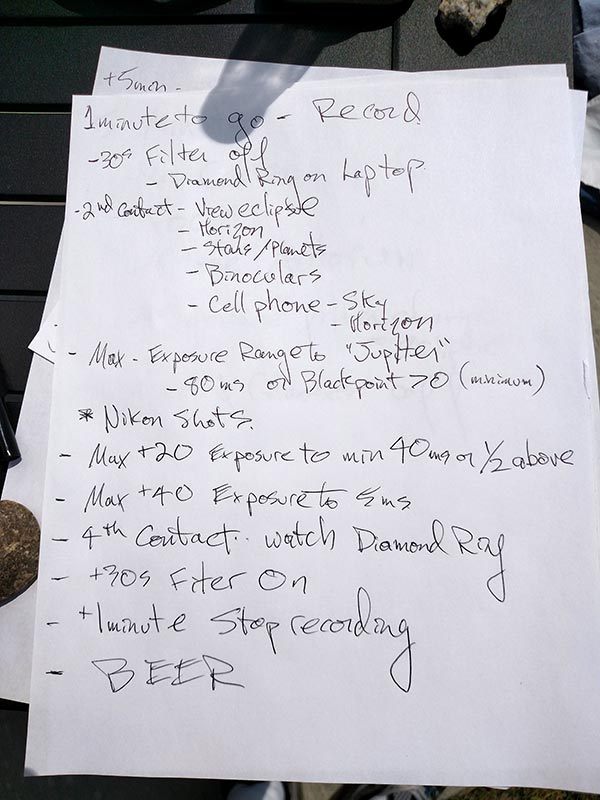 |
| note the shadow reflecting completion of the list Max is the halfway point |
Here's the full video in real time with minimal editing (calibrated and removed shaking frames during filter transition) if anyone's interested.
calibration was a problem, i finally figured out that PIPP (software program) only allows you to calibrate video with another video, rather than a single frame. fortunately, i'd saved my calibration video runs.
CONCLUSIONS/IMPROVEMENTS:
-video imaging seemed to give a sharper image than a still shot, as any plantery or solar imager will tell you.
-did not detect any motion in the fine structure of the corona at this image scale thru clouds
-disadvantages of video: lower dynamic range, consider moderately slow change of exposure length during imaging to compensate for this (or greater dynamic range)
-CCD chip bloomed on diamond ring phase, CMOS preferable
-the larger DSLR field of view seemed optimal for the corona:
4.5 decrees by 3 degrees or 4.180 arcsec/px
-focused my DSLR on clouds rather than on sun with solar filter which did not work. should pre-focus with a dedicated solar filter rather than clouds.
Image details:
DMK 51 web cam, Takahashi FS-60C, 60 mm aperture at f/4.2 with a reducer. Skywatcher star adventurer tracking mount. Baader solar film, Fotga IR/UV cut filter. The full field of view is approximately 96x72 arc minutes with a resolution of 3.6"/px. 20 second video capture at 12 fps, aligned in autostakkert, wavelets in registax.
Casper Wyoming
42,50.9694N 106,15.5688W
8/21/2017
